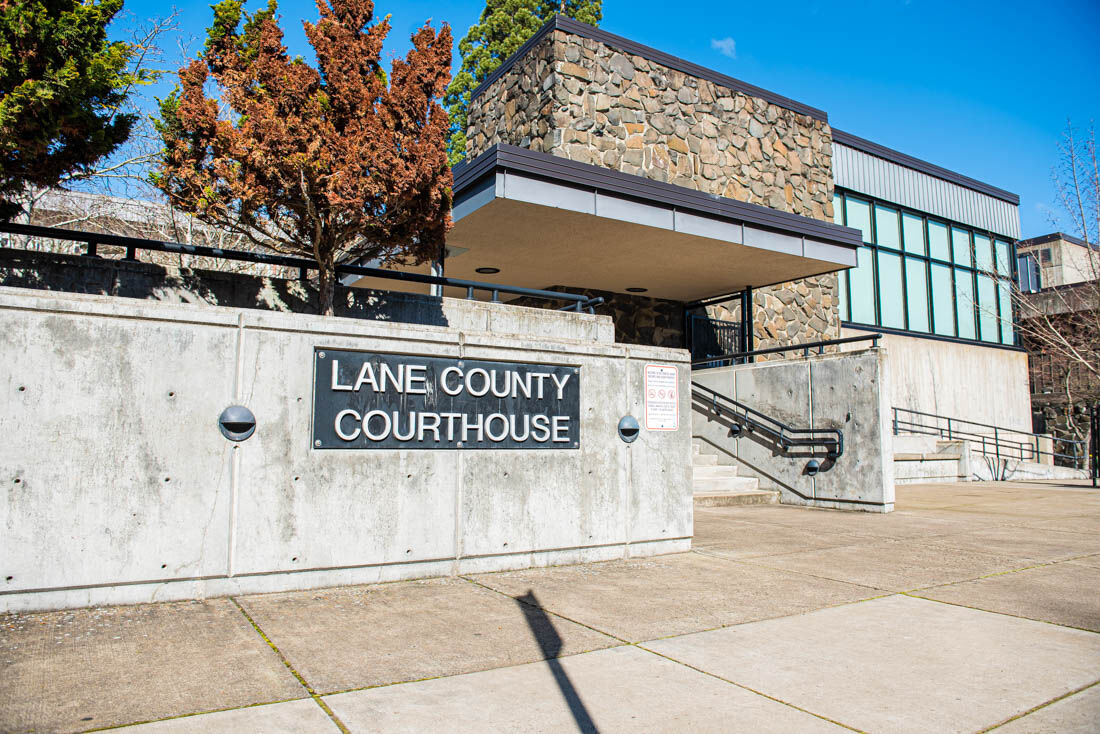Anywhere between four and 600 people visit the Lane County Courthouse daily. Located in the heart of downtown Eugene, the building was constructed in 1959 and since then, has undergone minimal renovations.
Lane County is responsible for maintaining the building and utilities. The most recent upgrade was a chair lift installed six months ago to help jurors in wheelchairs get from the jury assembly room in the basement, to the security entrance on the first floor of the courthouse.
Despite this upgrade, the building remains difficult to access for some with disabilities.
“If you had a catalog of [county owned] buildings that listed best to worst maintained, I think this side of the building [the courthouse] would pretty much be at the bottom of the list,” Trial Court Administrator Liz Rambo said.
The courthouse was built on a split level, which is typical of many buildings. However, because of the way the security entrance must be set up, access to the courtrooms begins on the second level. Those who are unable to use the stairs may use an elevator that moves patrons up and down six feet and two inches.
The elevator was installed through state funds from a lottery. “It was specifically earmarked, if I remember correctly, for court security projects,” Rambo said. However, the county was able to use the money for the elevator rather than increasing security measures that were already solidly in place. Courthouse employees heard concerns from disability advocacy groups that the location of the courthouse was inaccessible.
In response, in May 2019, the Eugene community voted on a bond measure that would allow the county to build a new courthouse. “The proposed new location was the parking lot right next door,” Rambo said.
The central location of the courthouse in downtown Eugene would have remained. Daphne Patrick, a University of Oregon student, said she likes
the current location of the courthouse because of its centrality.
“I think being close to downtown is nice, there is a lot of parking in the area,” said Patrick “It is in a highly populated area so I think it is pretty alright.”
The bond failed, garnering only 41% of the vote.
In 2020, civil employees decided to pause the conversation of building a new court house so the community’s energy could be focused on dealing with COVID-19.
Courthouse employees worked every day, in-person, during the COVID-19 pandemic. “[We] did a lot of physical distancing and put jurors in one room and watchers in another,” Rambo said.
A potential courthouse renovation could access some funds from the federal American Recovery Plan Act, which set aside money for essential workers, utilities and infrastructure. Under ARPA, the Coronavirus State and Local Fiscal Funds program authorized $350 billion to be spent by state, territorial, local and Tribal governments with the goal of bettering the community.
Oregon has received a total of $6.4 billion from ARPA. Of that money, Lane County received approximately $124 million to go toward county investments.
“If my dreams were answered I would love a building that would welcome people,” Rambo said. “For people to feel like it’s their building, where they go to get justice services, right now, it’s not really feeling like it.”
Rambo said that employees of the Lane County Courthouse do what they can to make the facility more accessible. They provide headsets and built a ramp in a courtroom for a judge who used a wheelchair.
“Everything is expensive, we have done everything that can be easily done, all the rest of it feels hard.” Rambo said.
[Editors Note: This article corrects the number of courthouse visitors to four to 600 visitors per day. The print issue incorrectly states these numbers as 400 to 600 visitors per day.]




















